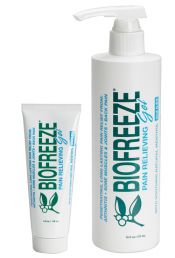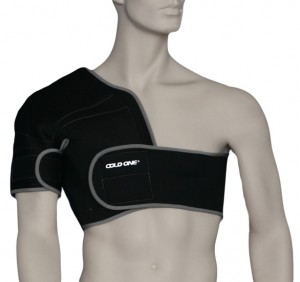Brian Schiff’s Blog
Injury Prevention, Sports Rehab & Performance Training Expert
If you read my blog, then you know I contribute a column for PFP Magazine. I have been doing a series for them on TRX training as of late. My most recent column included an incredibly challenging exercise incorporating a plank and push-up.
Time is precious for many of us in the gym, so I am always looking for the best return on my time with each and every exercise I choose. While this one is not for the novice or inexperienced TRX user, I assure you it will be one you will love to hate! Scroll down to check out the column and see how many you can crank out before you fatigue.
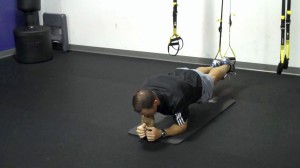
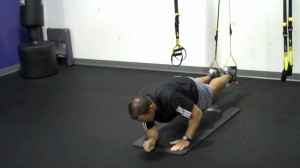
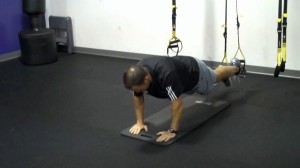
Click here to read how to correctly perform the exercise, use a progressive build up series and understand the functional application. I hope you enjoy this as much as I do!
Finally, I want to wish all my American readers a Happy 4th of July!
I have been rehabbing rotator cuff injuries for the better part of 13 plus years now. I also have the privilege of teaching fitness boot camps, educating other fitness pros on training/rehab and training athletes. One of the most common issues I encounter in my work is rotator cuff pathology (tendinitis, tears, etc.).
I have sold well over 10,000 copies of my Ultimate Rotator Cuff Training Guide (e-book and print versions) since its release in 2004. While most of the training methodology is still sound today, I wanted to add some new content and tweak a few progressions. Like anything, with time you gain more experience and wisdom.
In addition, many people were asking me for the DVD version to better understand how to perform the exercises. So at last, I have released the DVD version. Some of the new additions include:
- Soft tissue mobility exercises
- Self assessment screening tools
- Integrating a towel roll with rotation exercises
In addition to the DVD itself, you get a companion CD-ROM with my Self Stretching Guide, personal interview on rotator cuff injuries, my 60 minute rotator cuff explained power point and audio seminar, the entire updated rotator cuff e-book, and 5 second video clips of each the particular exercises in the rehab plan.
I am selling this product for $49.95, but until next Wednesday (June 16) you can get it for only $29.95.
Click here to see a sample clip from the DVD
If you decide to grab a copy, simply use the code BFITCUFF (all caps) at checkout and be sure to hit apply to get credit for the coupon. You can order at www.brianschiff.com.
This DVD is ideal for people with acute or chronic nagging shoulder pain related to bursitis, scapular imbalances, rotator cuff tendinitis and rotator cuff tears. As always, I offer a 60 day money back guarantee on all my products. If you have any questions, simply post them on the blog.
Here’s to happier and healthier shoulders!
I just recently returned from speaking at the AFPA Fitness Conference in Ocean City, MD. I gave four different talks but invariably I always end up educating fitness pros on exercise selection, modification, and progression based upon individual client response.
It is so easy in the health and fitness industry to use set protocols or schemes we are comfortable with across the board even when we know clients are unique. I have seen enough pathologic knees, shoulders, etc. over the years to know that everyone’s body reacts in its own unique way to exercise.
The primary tool we need to use to understand where a person’s body is in terms of inflammation and healing is pain. We need to educate our clients to be forthright about ongoing pain before, during and after sessions. So, what causes pain? Often it stems from inflammation.
I told the trainers this past weekend that cryotherapy will do wonders for many conditions. In fact, I see many discontinue ice after the first 2-3 days. This is a BIG mistake in my opinion. Who ever said ice will not help sub-acute or even chronic inflammation for that matter? I am adamant that clients ice in the presence of pain.
Pain is a marker and evaluative tool we need to embrace to better tweak rehab and exercise progressions. Cryotherapy is crucial in reducing persistent inflammation. I particularly like to use it immediately following workouts to reduce any new post-exercise soreness and inflammation that may creep up with higher volumes and intensities in the session.
Today, I wanted to share two of my favorite cryotherapy resources with you. You see, I want my clients to be proactive and vigilant with their own personal rehab and wellness programming. That often necessitates that they purchase tools to use at home. This way they are ready when unexpected pain or inflammation strikes.
My preferred solutions are:
- Biofreeze– a topical ointment or spray that helps reduce pain from aches/strains and joint pain. My personal massage therapist uses it and I find relief in my neck with it after each session. I carry this in my OpenSky store because it is effective. You can see more by clicking on the image below:
- Custom fit cold compression wrapsfrom Cold One – I personally own the shoulder, low back and knee wraps. These conform to your body and velcro down so you don’t have to hold them on or worry about them not hitting the right area. Click the image below for more info. You can even save 10% right now using the promo code BSCHIFF10.
I think you will find these resources useful in the recovery of musculo-skeletal pain and inflammation. While heat may be used and feels good, I prefer cold therapy to reduce pain and inflammation.
So, I have made part of my living the past several years helping people overcome shoulder pain. I often laugh when I hear people say “how hard can putting together an exercise program really be? It’s not rocket science or anything.” Well, maybe not, but getting it just right may mean the difference between a healthy shoulder and really hurting.
There is a new study soon to be released saying weight training injuries are on the rise (especially in males). In fact, injuries are up 50% from the period between 1990 and 2007. The majority of these injuries involved free weights. Many of the upper body injuries I see almost always involve the rotator cuff and/or labrum. Why? There are some primary reasons such as:
- Improper form
- Poor or absent spotting
- Exceedingly high loads in what I term the “high risk” soft tissue zones
- Too much volume/frequency
- Lack of posterior chain strength due to pressing dominance
- Too little recovery
- Pushing through pain
What most people fail to understand is that the high repetition associated with weightlifting coupled with unfavorable biomechanical stress through long lever arms leads to eventual mechanical breakdowns/failure. The basic translation = fraying, degeneration, tendinitis, tendinosis and tears.
This pattern equates to lost time in the gym and in some cases surgery. The ironic part is the damage is often done in the early lifting years but not seen or felt for a decade or two later. This is why the young twenty somethings like to debate me on the modifications I suggest for bench presses and such. Yet, read what one former power lifter recently emailed me below:
Yes you can count me as another one of your satisfied customers. I followed your 6 week injured series religiously and have recently moved on the your healthy shoulder series.
My main concern at this point is to avoid injuring the shoulder again and I will follow your advice on the 7 bonus exercises listed. My background fits the profile mentioned in your manual – 46 years old, former power lifter, injured dominant shoulder doing barbell presses about 6 months ago. I have been doing presses for over 30 years and unfortunately never read about the scapular plane.
The take home message is that modifying the load and adjusting the arc of movement with certain lifting exercises will indeed prevent common shoulder injuries and keep you in the gym for many years to come without the fear of a lifting injury.
While the hard core lifters and competitors may scoff at my application of the science and my suggestions now, they may also suddenly come to realize the potential consequences of their ways when a debilitating shoulder injury hits. Am I saying full range of motion and heavy loads are absolutely forbidden? No, but I do think you should ask yourself how often and for what purpose am I doing certain lifts in certain ranges of motion.
Additionally, I am saying that insufficient muscular balance coupled with repetitive load to near failure will over time result in acquired laxity, accelerated tendon degeneration and potential mechanical failure. Gravity and friction are two forces that will tear a shoulder down over time with exercises such as pressing, flies, dips, upright rows, side raises and push-ups to name a few.
So, the next time you feel a “twinge” in the shoulder with lifting, it may be time to consider backing off and making some changes in your routine as time and experience has taught me the rotator cuff and A-C joint will eventually say "enough is enough." If you want more information on my exercise modifications, check out my shoulder book at www.rotatorcufftraining.com.
One of my favorite tools I use in the gym with my clients is the BOSU. Admittedly, it is really easy to get carried away with various tools and equipment when training clients or ourselves. But, the BOSU is awesome if you are into building strong stable shoulders and safeguarding them against injury.
Many people focus on open chain (the hand is free in space) shoulder training, but in overhead athletes such as swimmers, volleyball players and throwers, it is essential to build a solid level of scapular strength to absorb force and enable the shoulder to move freely and effectively generate power.
I routinely include BOSU stability work in the following ways:
- Dynamic warm-up
- Core training
- Upper body work & scapular strengthening
One of my favorite exercises is what I term the “BOSU clock.” I wrote a column on this exact exercise for PFP Magazine a few months back.

Click here to read more and learn how to use this exercise to improve shoulder stability and reduce pain and/or injury risk related to shoulder instability, rotator cuff pathology and muscular imbalances.
This is just one great way to use the BOSU in your training. If you are interested in getting your very own BOSU, head on over to my OpenSky Shop and check it out – http://brianschiff.theopenskyproject.com/

